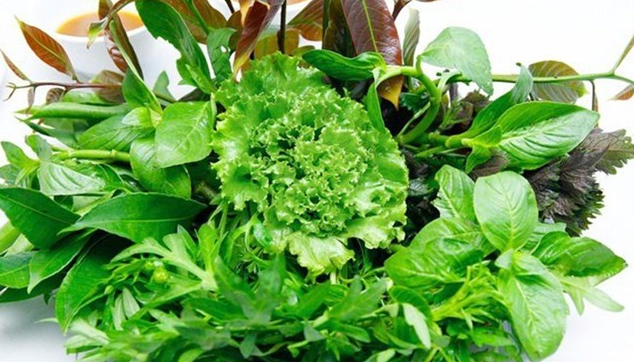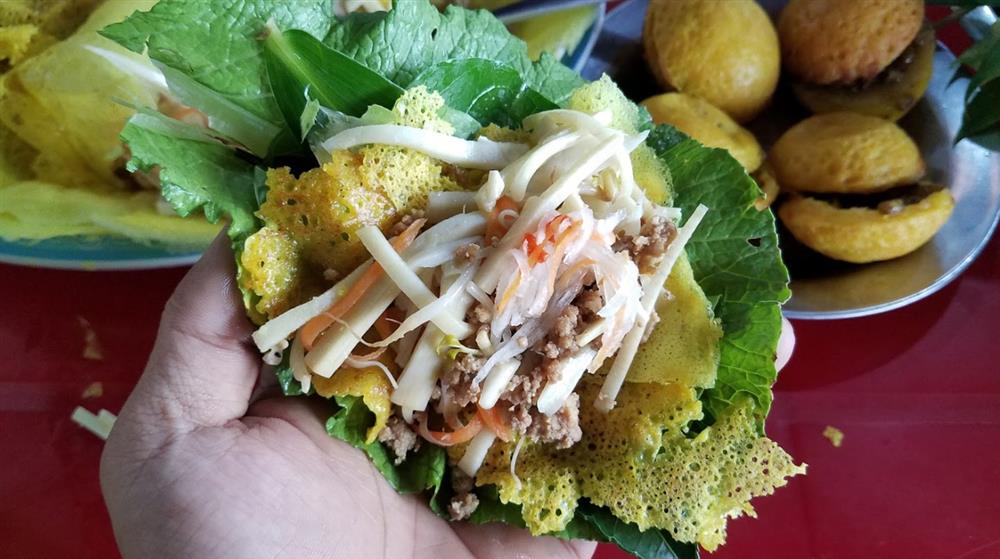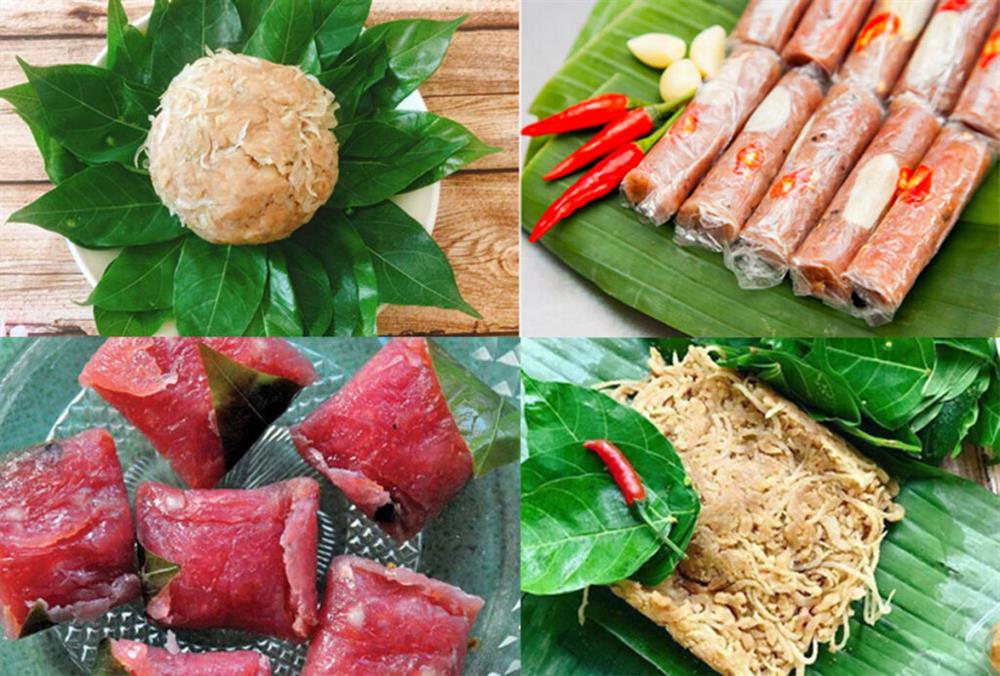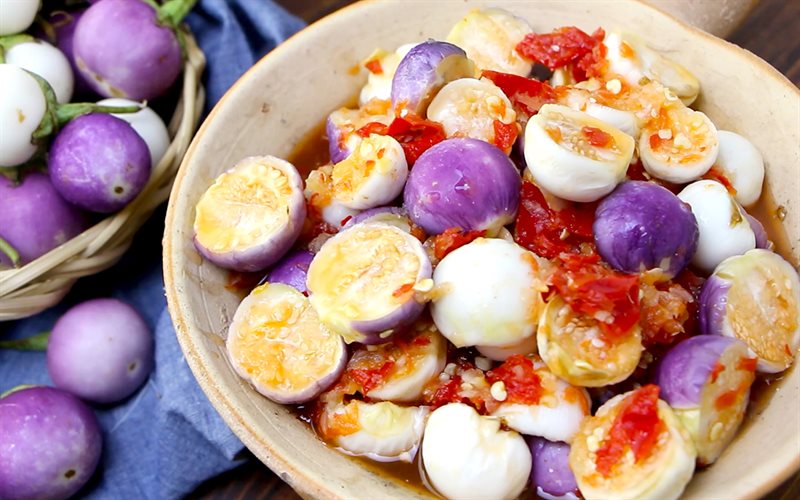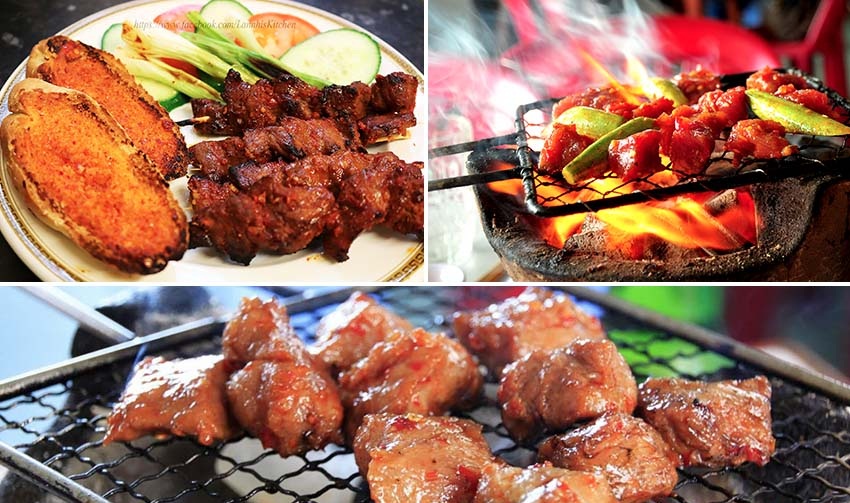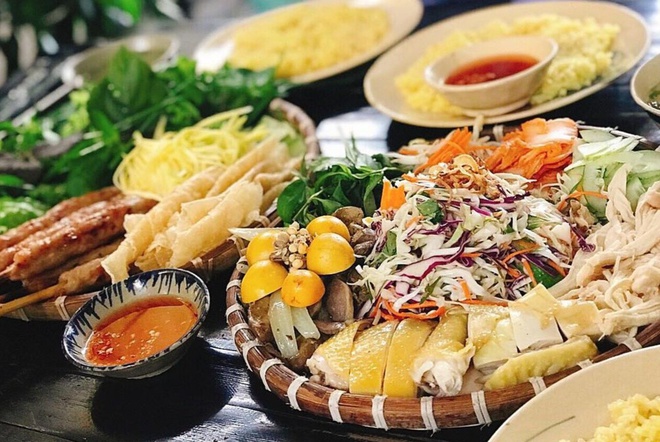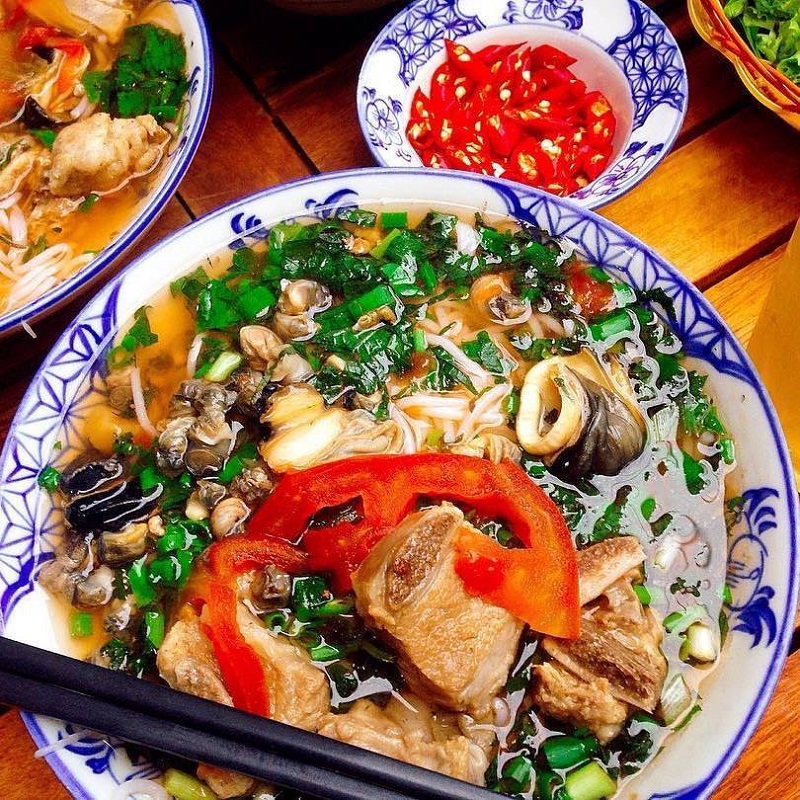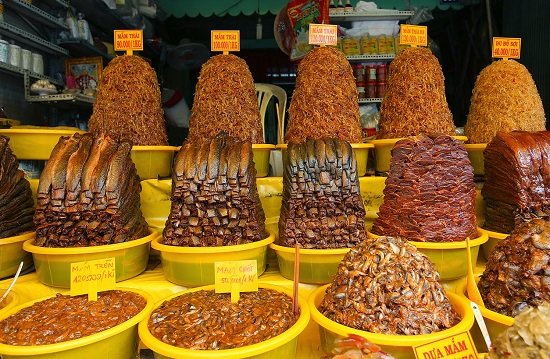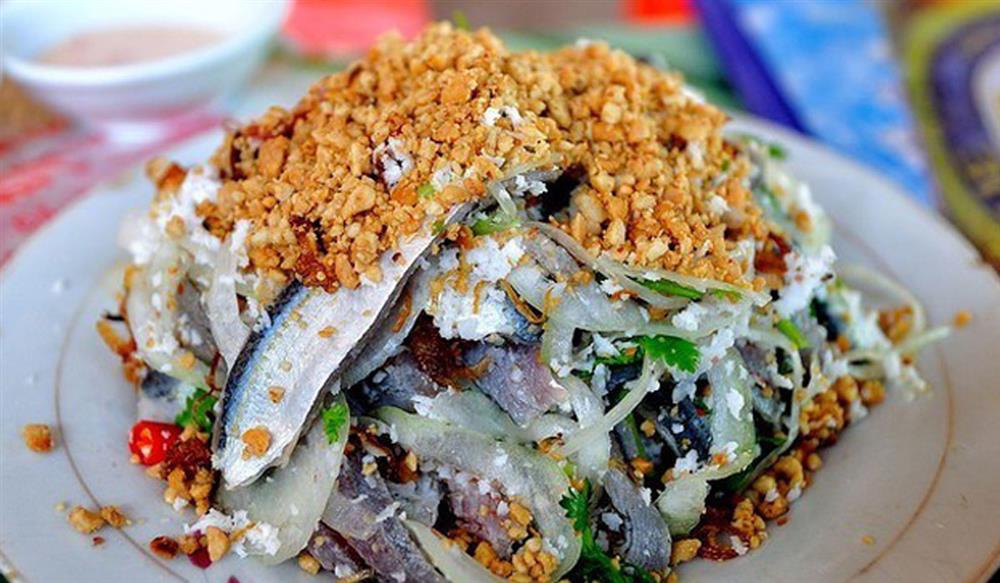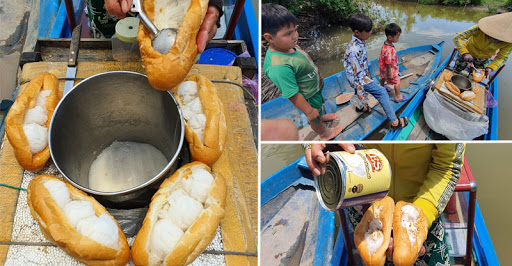You may feel full after eating just one Southern Vietnam’s bánh xèo, but you will need to eat at least two Central Vietnam’s bánh xèo to satisfy your appetite.
The word xèo (crispy Vietnamese pancake or sizzling cake) originates from the sizzling sound when pouring rice batter into a hot skillet. As the pancake is cooked, the steam comes out of the skillet like smoke, and the cake exudes a mesmerizing aroma. The Vietnamese dish has a catchy, funny name and unique flavors. Bánh xèo is popular in both Central or Southern Vietnam, but each region has its own way of making it.
In Central Vietnam, bánh xèo has a small size and is cooked in cast-iron skillets with ready-made molds of 10 to 15 centimeters in diameter. Before pouring the rice batter into the molds, the chef covers the mold with cooking oil so the pancake can be cooked more quickly. In Southern Vietnam, the chef often uses large skillets with unlimited sizes. They use a banana leaf to apply a thin layer of oil all over the skillets and wait until the skillets get hot before pouring the batter in. The chef turns the skillets evenly in a circle so bánh xèo can have a round shape; the pancake’s cover is thin but not torn, crispy but not easily broken. Bánh xèo in Central Vietnam is thicker than that of the southern region. Due to their sizes, just one Southern Vietnam’s bánh xèo is enough to make you feel full, but you will need to eat at least two Central Vietnam’s bánh xèo to satisfy your appetite.
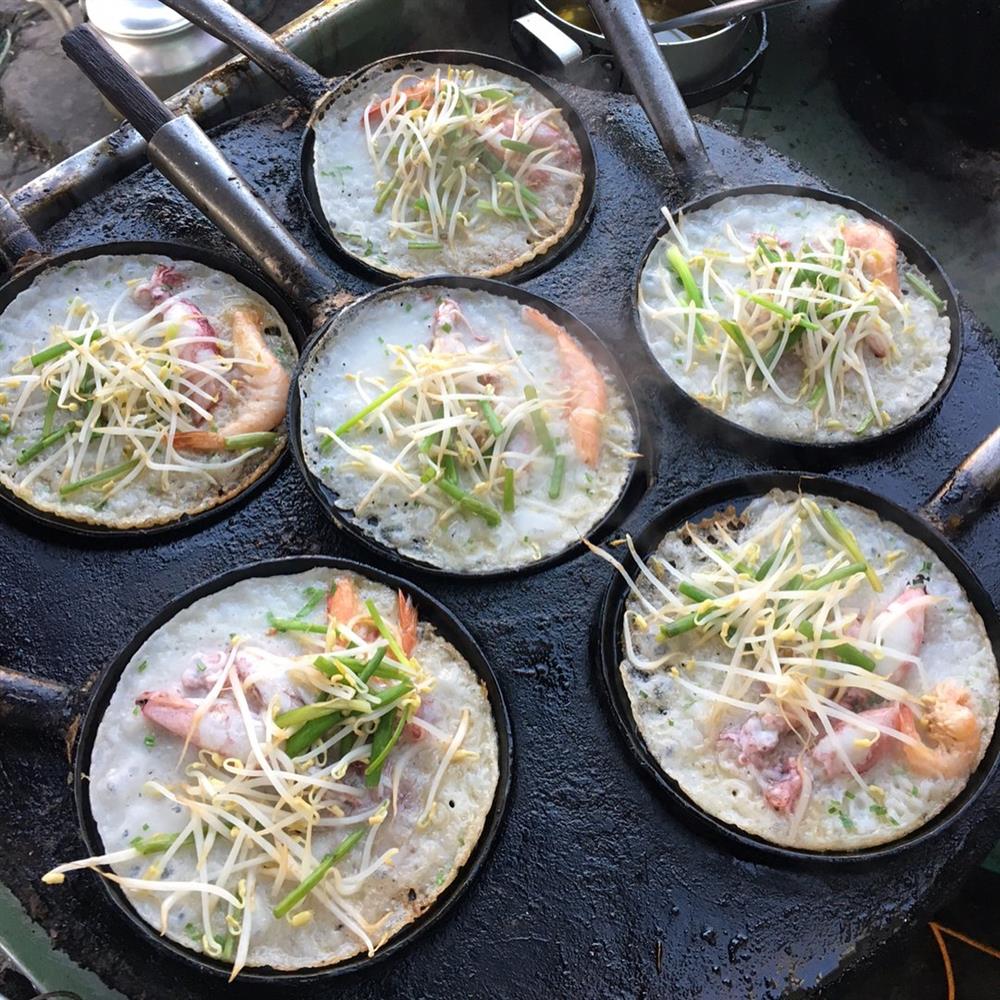
Both bánh xèo are made using rice powder. High-quality rice is soaked in water overnight before ground finely. In the past, the chefs used stone mortar to grind the powder. Nowadays, to save time and labor, they use grinding machines or ready-made powder.
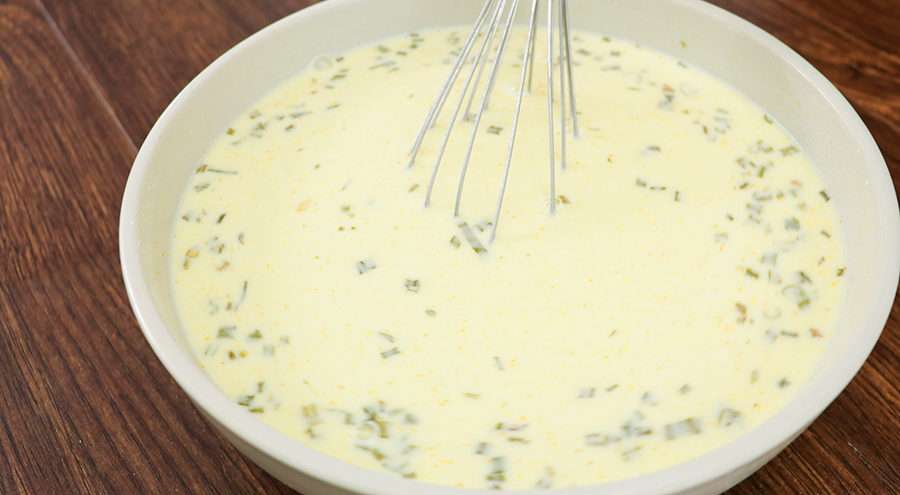
Bánh xèo in Central Vietnam
In Central Vietnam, the chef often keeps the color of the batter intact and only adds some seasoning. Meanwhile, the chef in Southern Vietnam often adds turmeric powder or another food coloring to create light yellow bánh xèo. Some people add mung bean powder or ground cold rice to make the cover crunchier, but the most popular way to make the rice batter for Southern Vietnam’s bánh xèo is still mixing diluted rice powder, turmeric powder, coconut milk, sugar, salt, and chopped scallions.
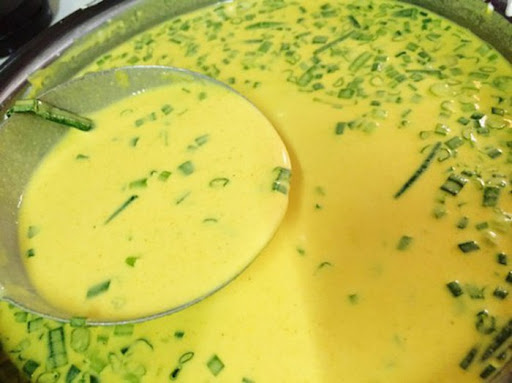
Bánh xèo in Southern Vietnam
Bánh xèo in Central and Southern Vietnam differ significantly in the fillings. Provinces in Central Vietnam have a rich source of seafood. Therefore, the chef fills bánh xèo with the seafood available in their regions, such as prawns, squid, fish, scallop, and shrimp. Tiger prawns and baby squid are a must in some restaurants.
In Central Vietnam, the fillings for bánh xèo are kept fresh. The chef waits until the oil is hot before putting seafood in, then quickly tosses them in the mold until cooked. Afterward, the chef pours the rice batter in, then adds bean sprouts and chives. The vegetables are cooked as bánh xèo is ready to serve.
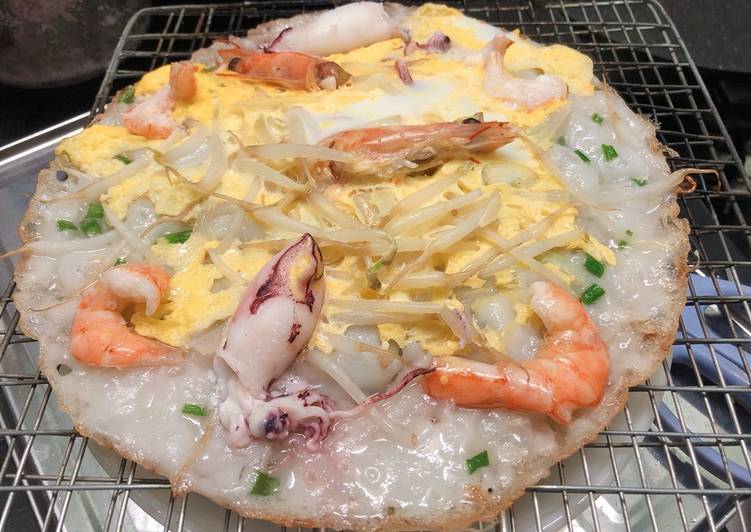
In Southern Vietnam, the fillings for bánh xèo are more diverse with the use of pork, duck meat, river shrimps, and an assortment of mushrooms. It’d be amiss not to mention bánh xèo with Siamese duck. The duck is cleaned; the big bones are removed; and small bones are chopped finely with the meat, seasoned well, and sautéed until cooked. Bánh xèo makers in Southern Vietnam also use other ingredients for fillings, such as chives, cassava, Egyptian river hemp, cowslip creeper, vegetable hummingbird, coconut core, and pineapple tree core.
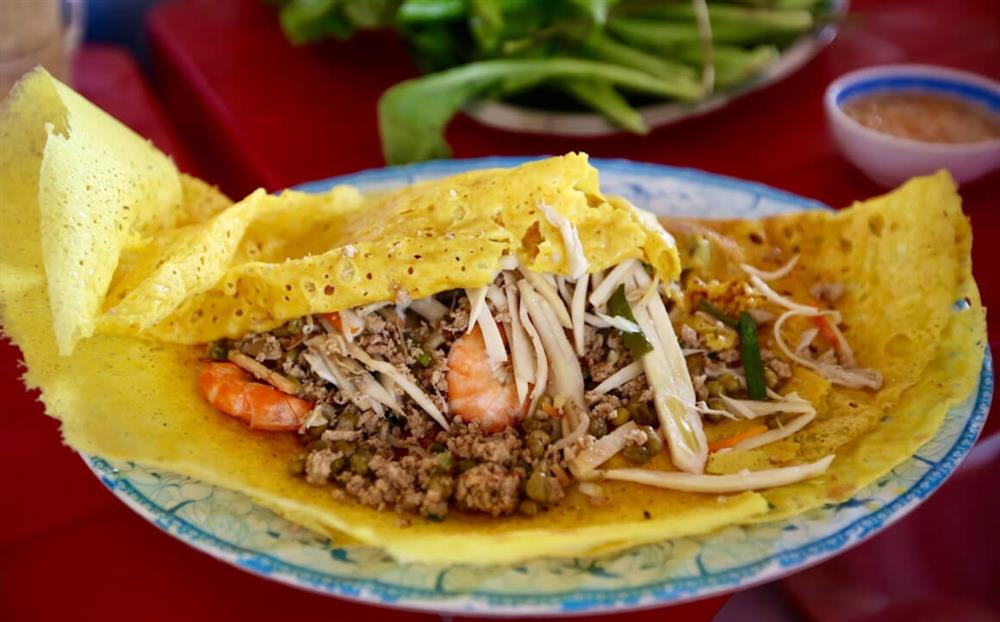
Bánh xèo in Central Vietnam can be crunchy or soft, depending on the localities. It is served with vegetables like mustard greens, lettuce, and fish leaves. The dipping sauce can be a special type of brown, thick sauce called mắm nêm or sour-sweet fish sauce. Some restaurants provide rice paper so customers can wrap over bánh xèo and vegetables to their liking before dipping in the sauce.
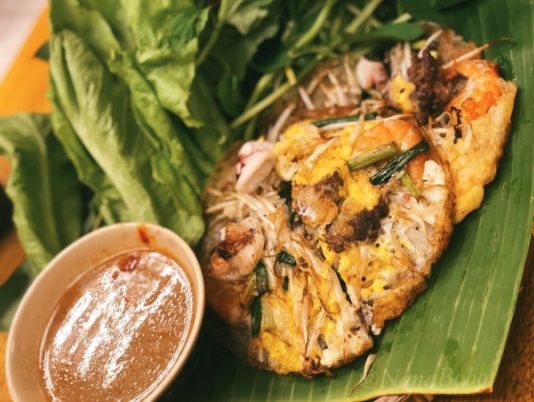
In Southern Vietnam, an excellent bánh xèo must be round, thin with a crunchy rim. The fillings are evenly spread after folded in half. There are over 20 different types of vegetables that can be eaten with Southern Vietnam’s bánh xèo, such as fish leaves, lettuce, mustard greens, crêpe ginger, shisho leaves, and piper lolot. To eat bánh xèo in Southern Vietnam’s style, you can cover the folded bánh xèo with vegetables and dip in a sauce made of fish sauce, sugar, lime juice, minced chilly, and julienned radish and turnip.
